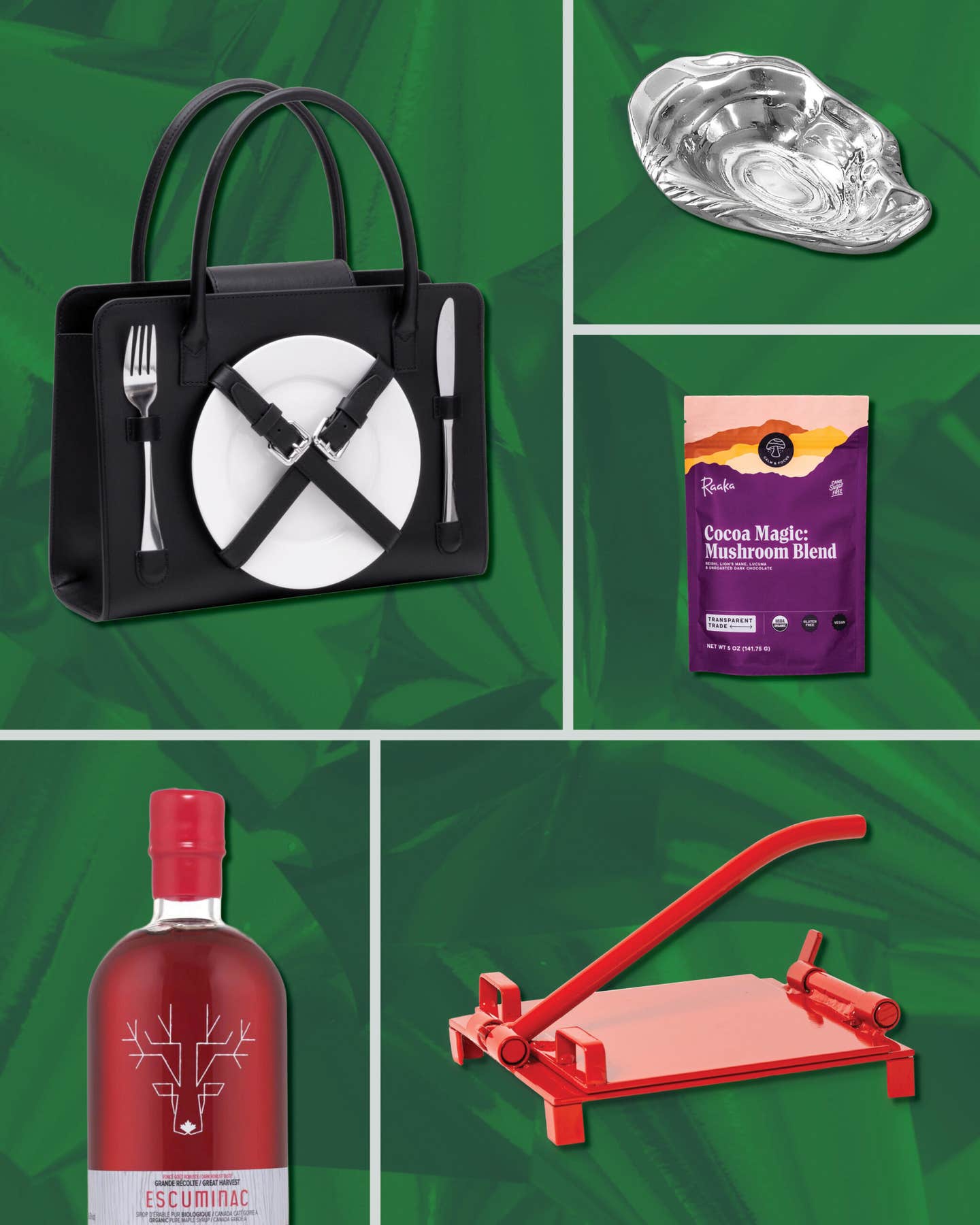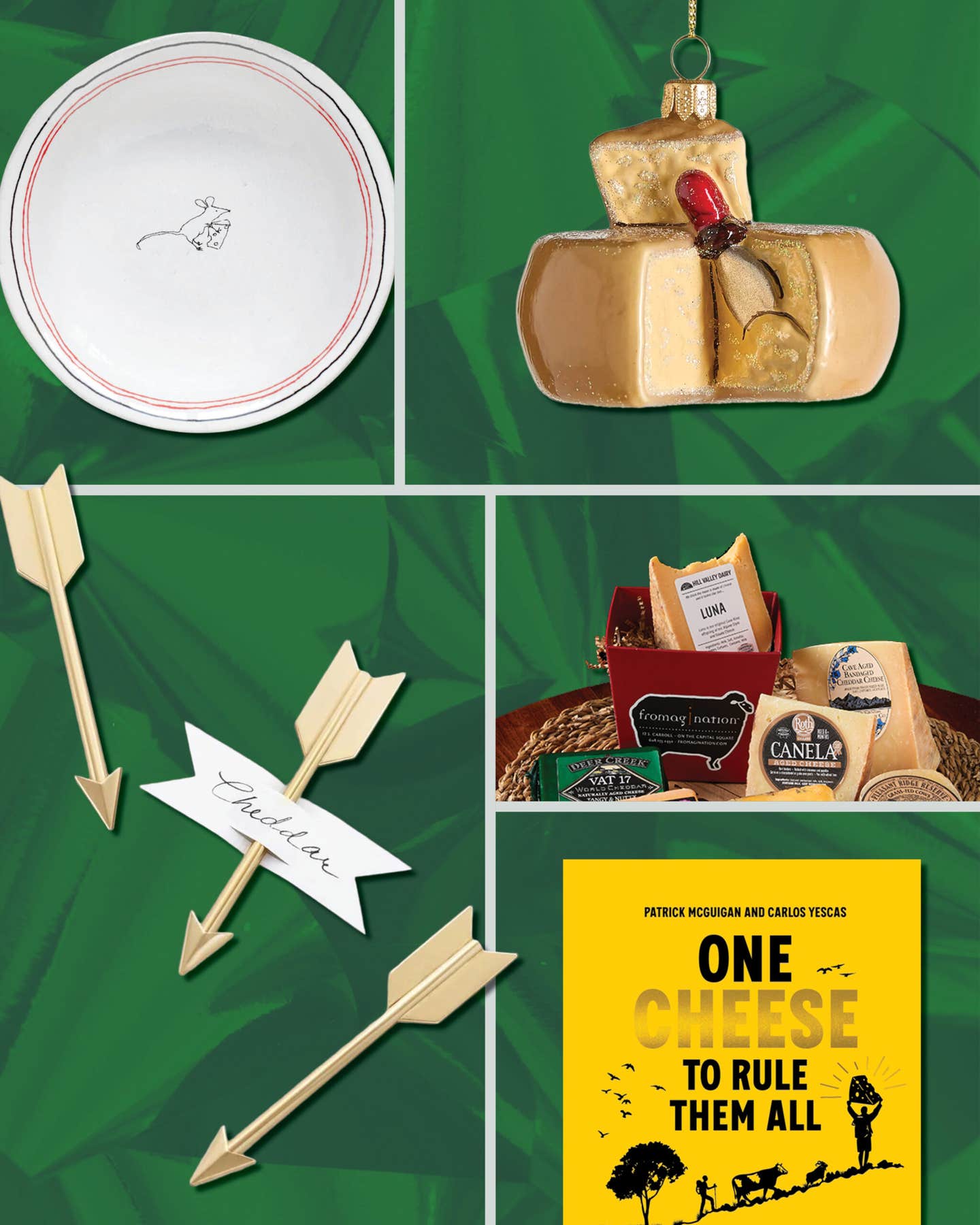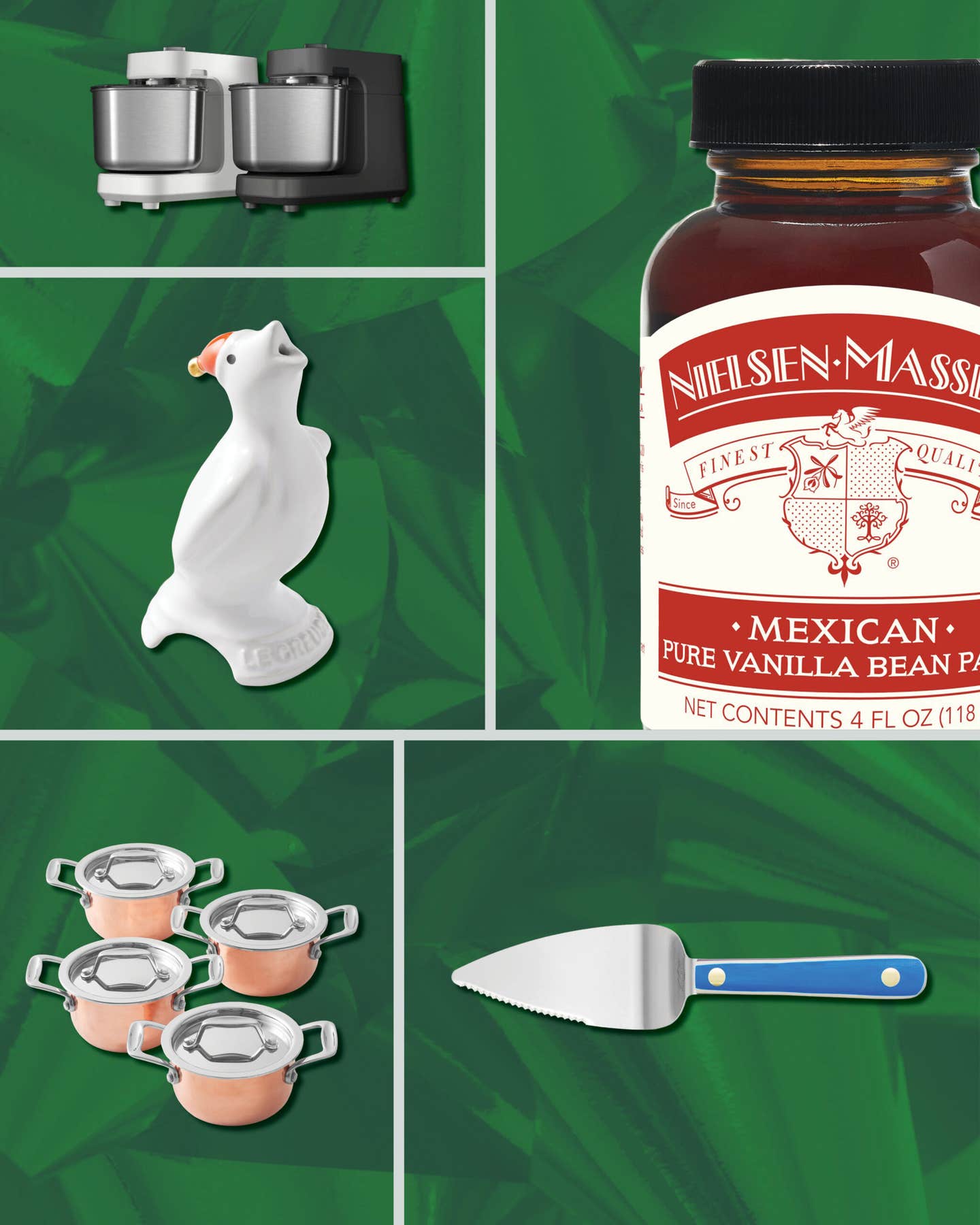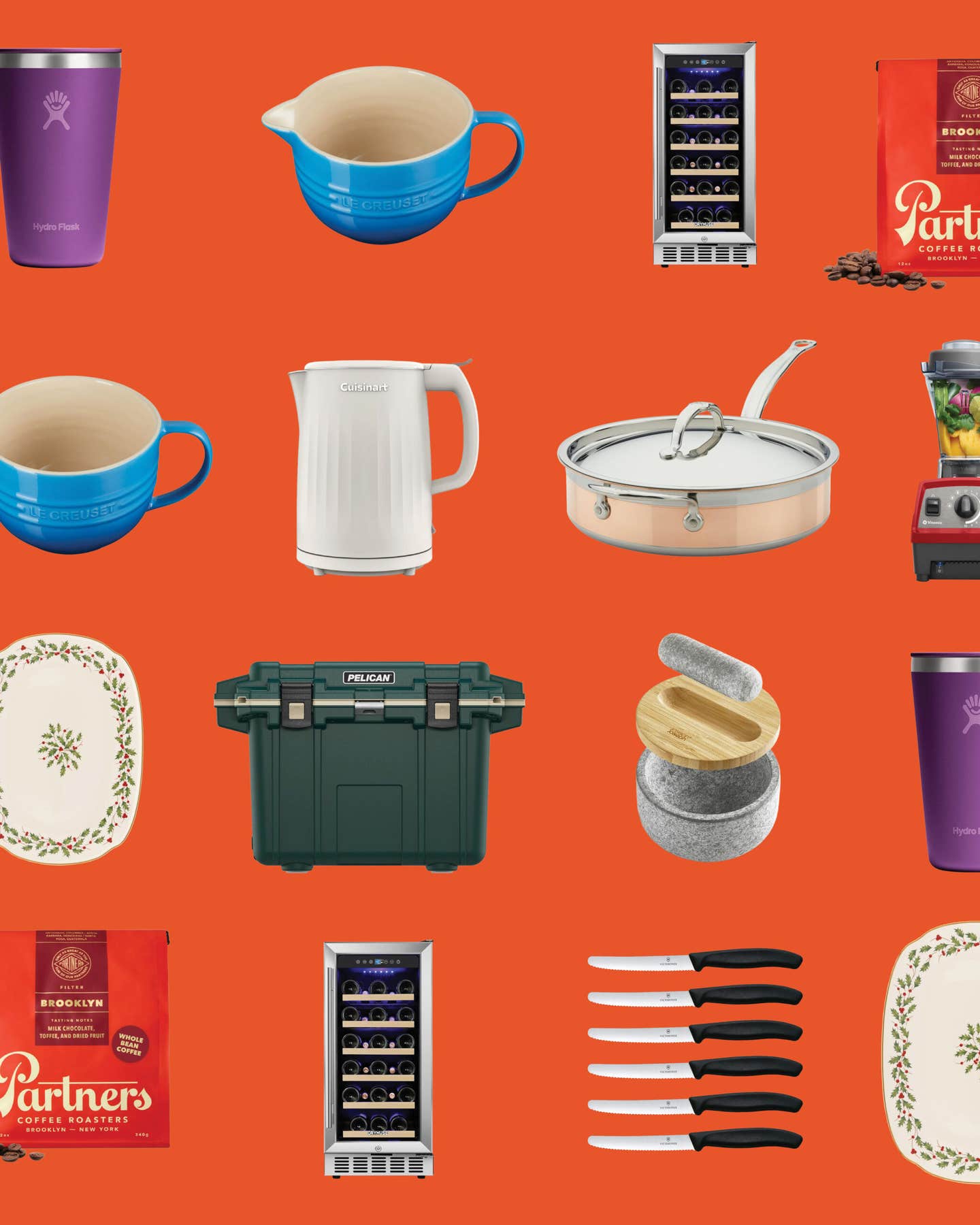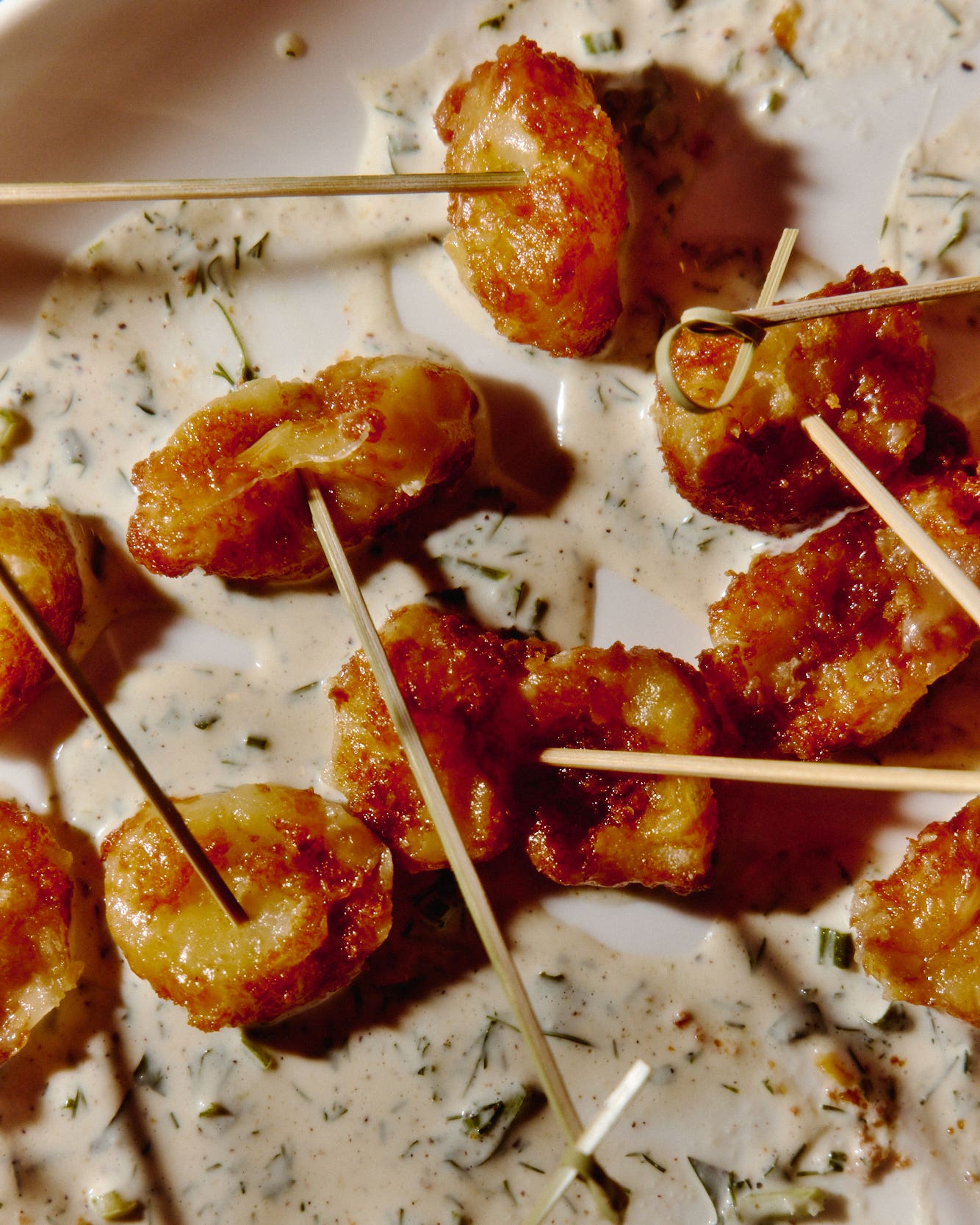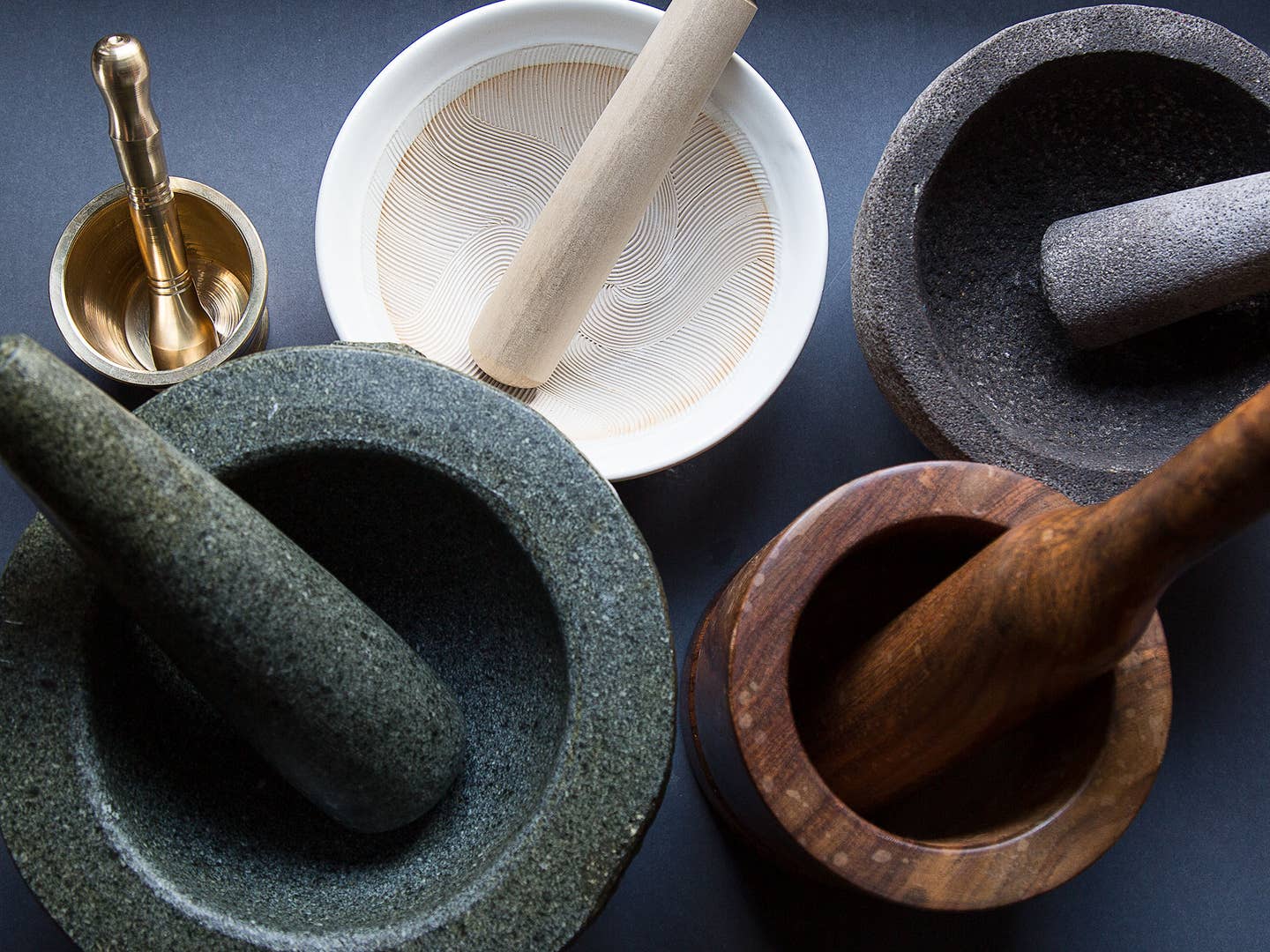
Why It’s Really, Truly Worth it to Finally Buy Yourself a Mortar and Pestle, Because it’ll Make You a Better Cook
Yes, it’s heavy and bulky and old fashioned; get it anyway
"With a mortar and pestle, mash..."
And that's the point in the recipe when my eyes would glaze over.
A mortar and pestle is one of those stubborn kitchen implements that you never really need, and recipes usually offer substitutions (quite creatively even, look at you crushing black pepper with a frying pan), and you can live a fully happy, productive, ethically fulfilling life without one—so you never buy it. And your food is, for the most part, fine.
But every once in a while you go into one of your cooking phases. Maybe you want to make coconut chutney or curry paste completely from scratch, even when the canned stuff is pretty decent, or you want to mash your guacamole like the restaurants do, tableside with a massive molcajete. Or you see a recipe call for a tablespoon of ginger-garlic paste and you just cannot, for the life of you, imagine that your cobbled-together version with finely minced ginger and garlic could be as good. So you begin to wonder, maybe I do need one of those, even though it's heavy and bulky and you have nowhere to put it.
You do. Buy a mortar and pestle, suffer a half hour at most of buyer's remorse, and then be a slightly better cook forever.
Because this kitchen tool, one of the simplest in any culinary arsenal, is just better at what it does than anything else. Whether you're getting hardcore about making curry paste or simply mushing up some herbs to spread over a roast chicken, a mortar and pestle makes it better. Better than the sharpest knife, fastest blender, or most vicious food processor.
Why It's Better
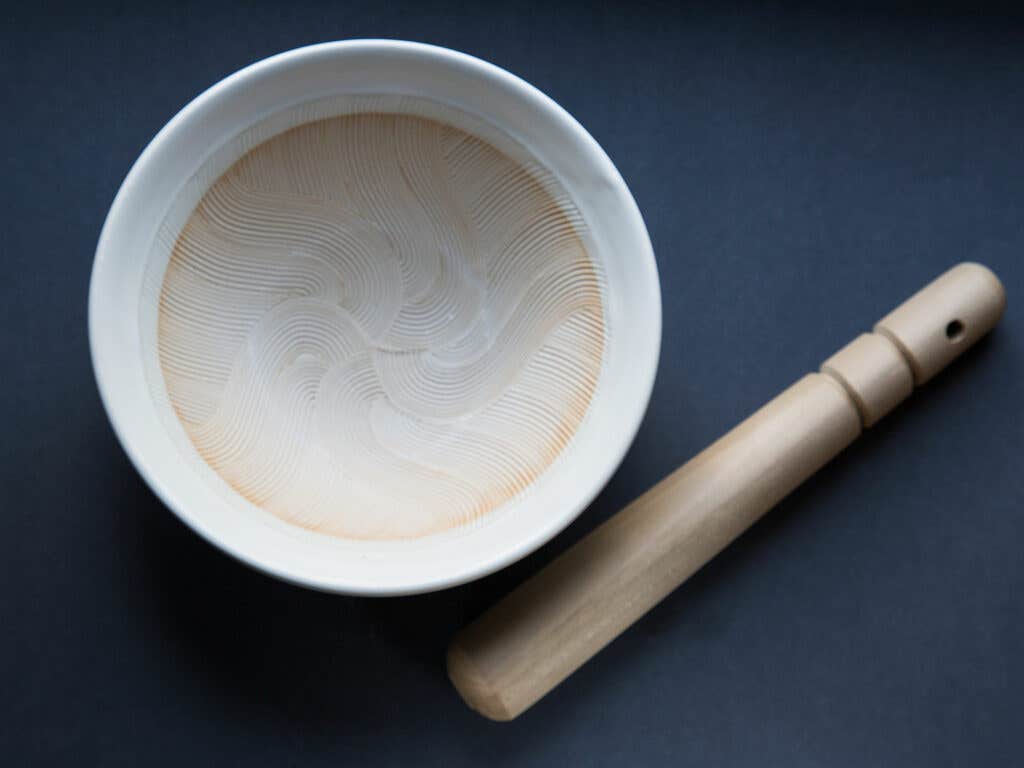
The sciencey reason is simple: A mortar and pestle crushes plants while a blade cuts them. And if you want to expel all the essential oils, full-bodied flavors, and unique body of a hunk of garlic or leaf of basil, crushing is the way to go. Plants are made of rigid, boxy structures that trap vital flavor inside. You need to rupture them to release that flavor, and crushing does so far more effectively than the thin blade of a knife. It's so effective that, these days, I don't make a pot of beans without mashing up some garlic in a mortar and pestle first.
A mortar and pestle also does the job, paradoxically, with far less bruising to herbs than you'd get from finely mincing them or running them through a food processor. Since a mortar and pestle moves only as fast as your hand can, it won't generate heat through friction like a food processor would. Not only does the old fashioned way extract more flavor than a spinning blade, but it'll keep those flavors brighter, too. When an old colleague of mine was doing a dozen tests in search of pesto perfection, the only variable that truly made a difference in the sauce's creaminess and basil-ness was mixing it all together in a mortar and pestle. And the difference was dramatic: brighter colors, bigger flavors.
There's also the matter of amounts. Need to crush a tablespoon of black pepper, or mix up garlic, lemon, and herbs for a gremolata? Good luck doing that well in even the smallest food processor. Spice grinders (a.k.a. coffee grinders) also aren't well suited to the job. But a mortar and pestle is. And it'll mash those ingredients up into a quasi-paste better than anything else. Add some olive oil in and the ingredients will perfume it all the better, and with enough mashing you'll get a beautiful creamy condiment to put on pretty much everything.
That's the beauty of finally buying one of these things: Once you have it, you feel so guilty about letting it sit there and so excited about all the things you can make now, that your own paranoid psychology will practically put it to use for you.
What to Make With It
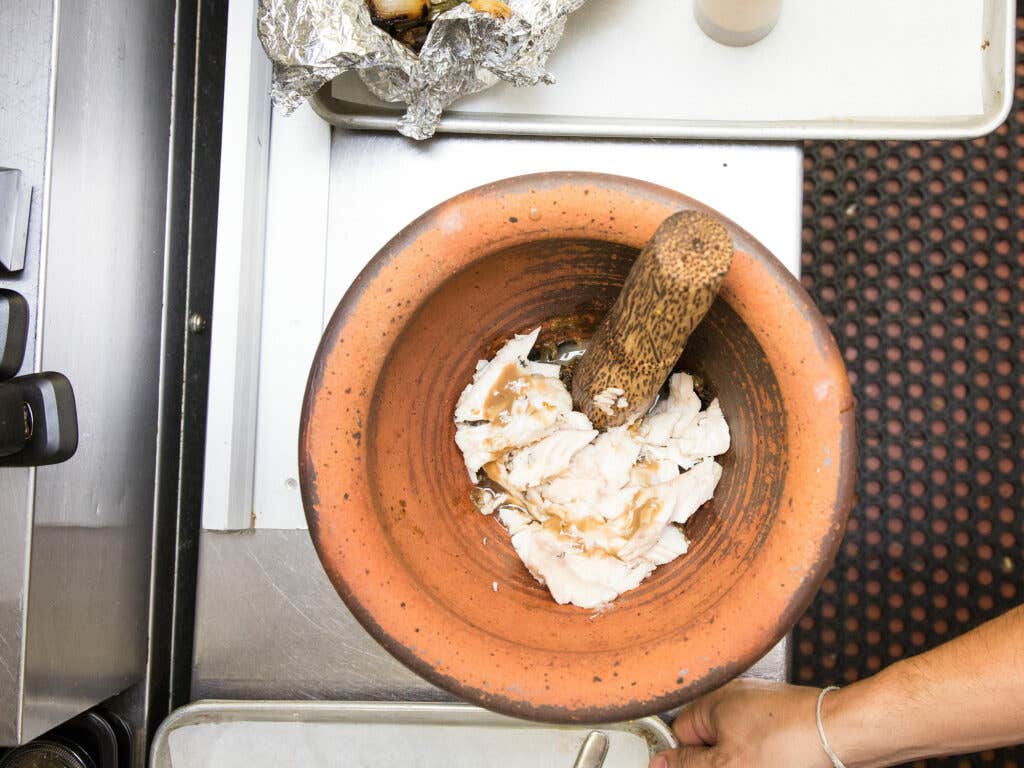
What tastes better when made with a mortar and pestle? Any of these recipes:
Just to name a few.
Which One Should You Buy?
Mortars and pestles come in all sizes and materials, and which one you buy depends on what you plan to do with it. The best all-purpose one is something like this porcelain model: large but relatively light, good for big and small jobs, and the pour spout is handy touch. For a kitchen-to-table statement piece perfect for that guac, a honking granite mortar is a nice choice, whereas a smaller one is better suited to crushing spices for spice mixes. There's also this Japanese-style suribachi lined with grooves, which are harder to clean but make excellent work of grinding nuts and seeds into creamy pastes.
Whichever you buy, remember, if you're in doubt about why it's worth it, make a bowl of this to remind yourself:
Keep Reading
Continue to Next Story
